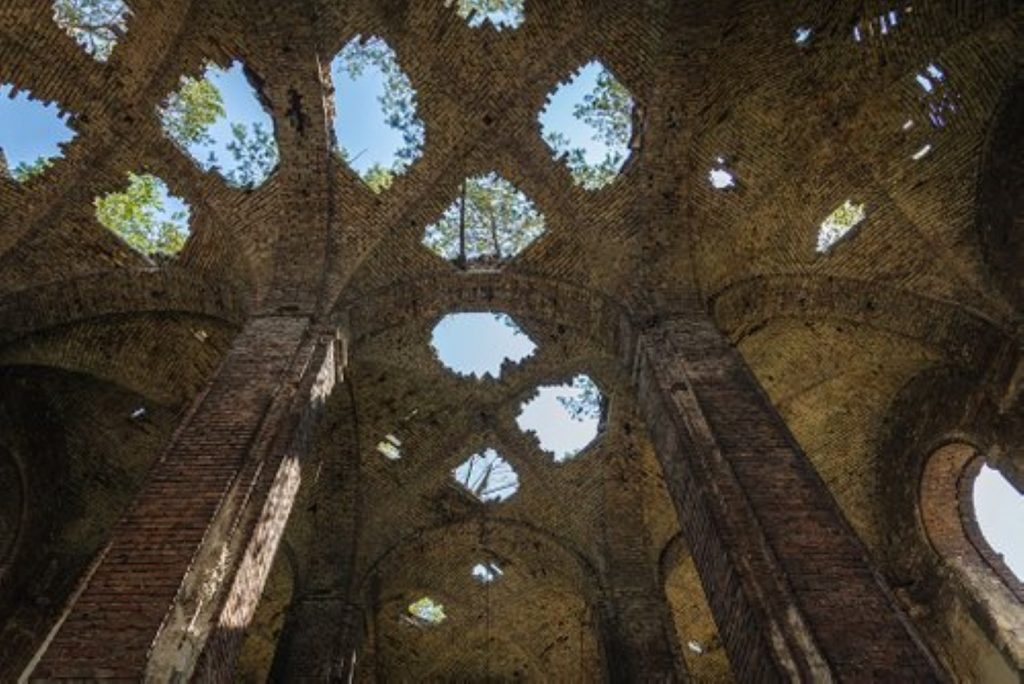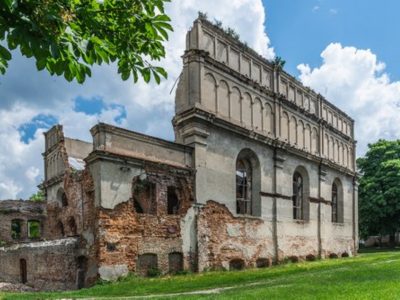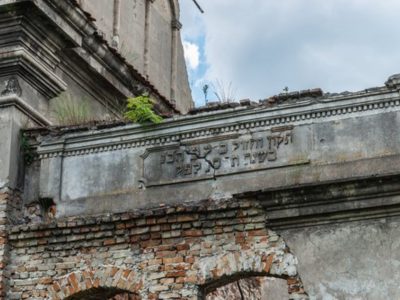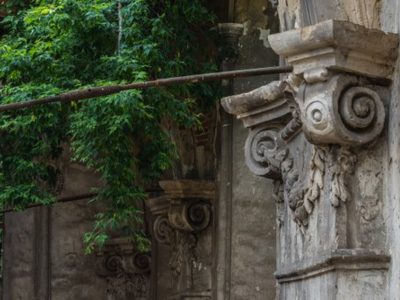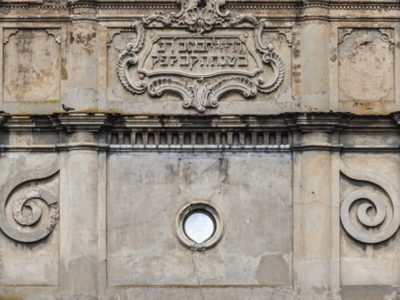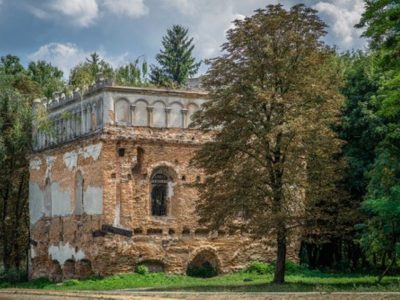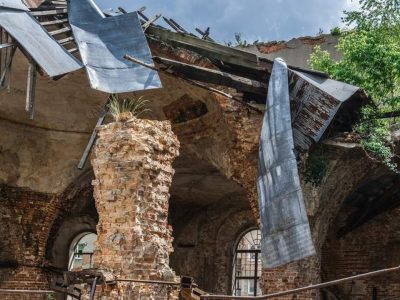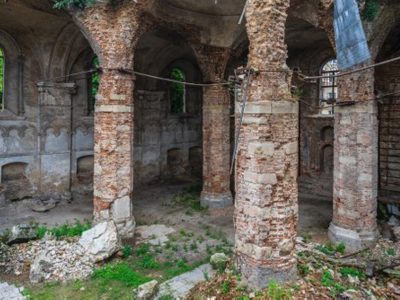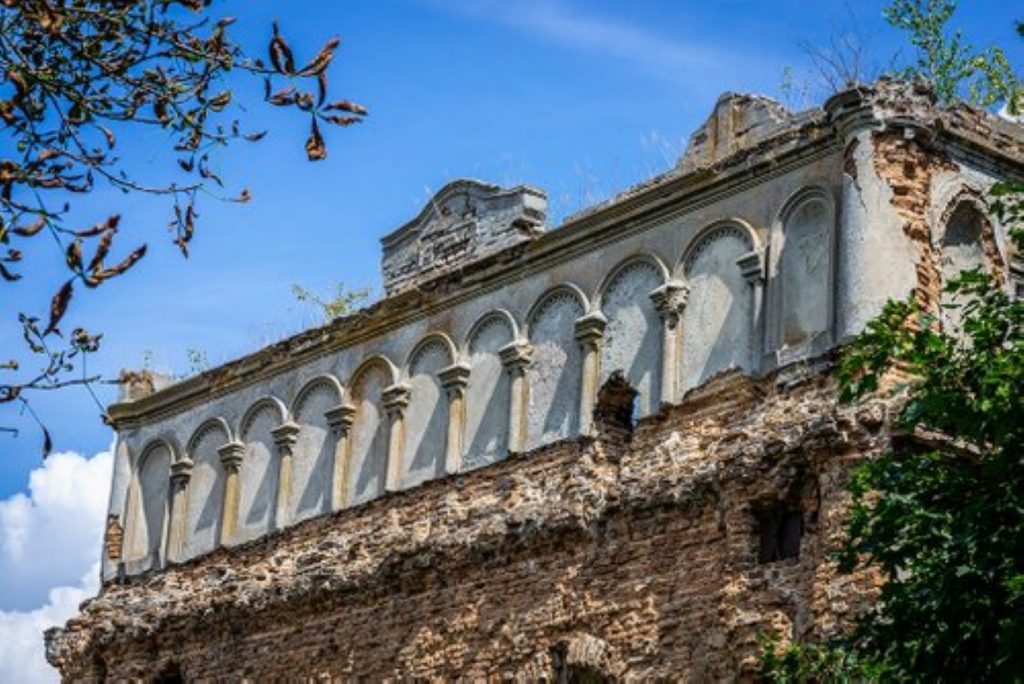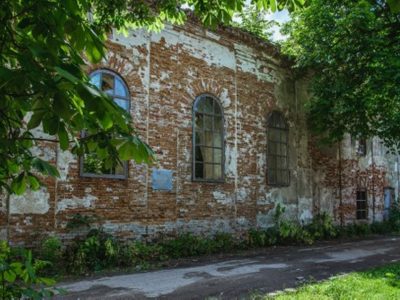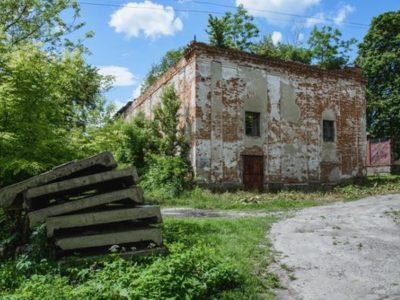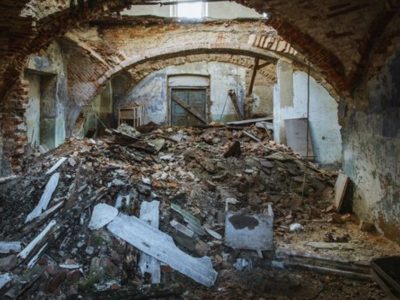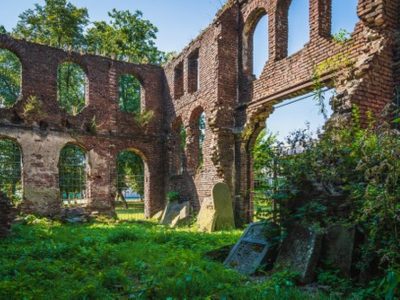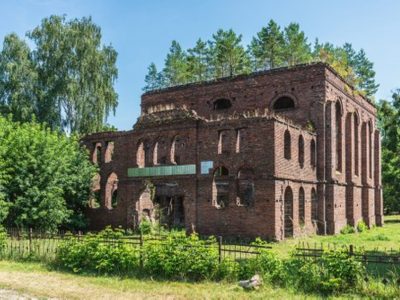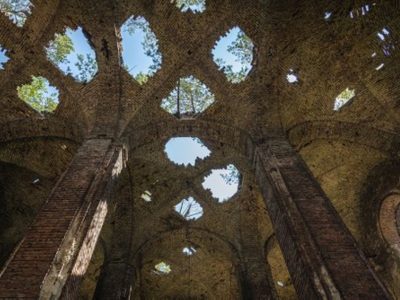A vanishing world
[Editor's note: Russia's unprovoked and criminal war against Ukraine suspended the regular work of many organizations, reorienting their efforts. So it is with the Ukrainian Jewish Encounter. In the coming weeks, we will run interviews and articles done before the beginning of the war, which reflect the myriad of interests undertaken by Ukrainian journalists, scholars and writers.]
Brief historical accounts about famous Galician synagogues
It has become a common habit to mention the multicultural and poly-confessional character of Galicia, Bukovyna, and Transcarpathia and to mention the high density of the Jewish population on the territory of historic Volyn and central Ukraine, on both banks of the Dnipro River, and, in poring over old maps and illustrations featuring the historical landscapes of our country, to demonstrate the proximity of Ukrainian churches to Roman Catholic churches and synagogues. Historians say that, if not for the wave of uprisings that took place in the region known as Vyshnevechchyna, with its center in Lubny, located in Left-Bank Ukraine [the region, encompassing 50 cities, towns, and villages, was colonized by the Polish magnate Jeremi Wiśniowiecki (Ukr. Vyshnevetsky, giving rise to the name of the region)—Trans.], the area might have become a model of poly-confessional coexistence, wherein a single city there were a Ukrainian church, a Roman Catholic church, a Protestant prayer house, and a synagogue, all equidistant from each other.
As a result of a whirlwind of shocks that have taken place in our land over the past few centuries, Ukraine has suffered immense losses, above all its people. However, the material culture proved to be no less fragile and vulnerable. This is especially true of sacred structure and art because the Cossack wars and uprisings as well as Russia's military intervention, often had a religious character, or faith was used as a cover for external aggression.
Next in line was the atheistic Soviet government, which blew up Christian churches, and repurposed Roman Catholic churches and synagogues into warehouses, sports gymnasiums, and clubs. It persecuted and banned Orthodox, Ukrainian Greek Catholic, and Protestant churches. In the GULAG it oppressed and shot Ukrainian priests, Roman Catholic priests, Protestant pastors, and rabbis. And by means of the Holocaust, the Nazis sought to put a terrible, bloody end to Ukraine's Jewish history. On the territory of occupied Ukraine, the Nazis and their allies killed nearly 1.5 million Jews. They not only killed people, but also tried to erase off the face of the Earth everything that was connected with this people: synagogues, cemeteries, and monuments. After the Second World War, the land of Ukraine was turned into one gigantic cemetery for Jews, above all, through the horrific crime of the Holocaust carried out by Nazi Germany — a cemetery without any special markings because ancient Jewish cemeteries were destroyed as a rule, their gravestones used for the foundations of asphalted roads.
Both the Nazis and the Soviet government wanted to atomize the peoples who populated Ukraine, to convince them that only "their own" had value and in this way, weaken resistance to violent killing and ease the way toward imposing complete amnesia about their shared past. During the war, the principle of "This is not ours" swept over sacred structures like a terrible tornado. Abandoned, majestic Roman Catholic churches have managed to survive to an age in villages where there will never again be a Roman Catholic community. If Poland's Ministry of Culture does not allocate a special grant to save them, their demise will arrive in a few years. There are beautiful synagogues in cities where there is no longer — and may never again be — a Jewish community. If the patrons of the entire world do not halt their ruination, not a trace of them will be left in ten years.
This summer [2021], when I was photographing a synagogue in Zhovkva, I heard some very hopeful words from a couple of boys: "This is our synagogue." The boys were proud that such a monument was situated in their city. In their minds, there are no more old, xenophobic barriers. They are beginning to live with the understanding that this is their city, which has a rich history, and where traditionally there was room for everyone because it had been designed and planned as an ideal city. That is why all the confessions to which the people who built and created it belong are well represented in the architecture.
Today we are introducing the first of a series of articles entitled "A Vanishing World," about the synagogues of Galicia. The series will feature short historical accounts of famous Galician synagogues and their present condition. We want to halt, at least in a digital manner, the inevitable disappearance of the old world of Jewish Galicia. We would like to organize a genuine Ukrainian-Jewish encounter for the current inhabitants of these old Galician towns.
Today, the ruins of ancient synagogues and neglected cemeteries are reminders of them. Despite the fact that dozens of such synagogues are national-level architectural monuments and internationally recognized examples of synagogue construction, most of them are in a critical, half-ruined state and are systematically falling to pieces. However, there is some positive movement. In Old Sambir, the synagogue has gotten a new roof that will save the building from ruination for some time. The synagogue in Drohobych has been repaired and restored. These efforts serve as an example for saving other Jewish sacred structures. However, in the majority of cases, there is no one to restore these iconic buildings. Now that I have collected information about ancient synagogues on the territory of Lviv oblast, I would like to direct the attention of both residents and tourists to these wonderful structures that have been witness to the region's difficult history. Even ruins can recount a lot about it. I would also like to believe that this separate world will not perish in a sea of indifference.
Brody
The Great Synagogue in Brody, built in 1742, is located near Ploshcha Rynok (Market Square) on Honcharska Street. It is officially recognized as an architectural monument of national significance. Nevertheless, the synagogue is in a critical state and falling into ruin.
The city of Brody was located at the crossroads of trade routes and was thus destined to become a great trading center. The first mentions of the presence of a Jewish community in Brody date to the late sixteenth century. By 1648 nearly 400 Jewish families lived in the city. In 1699 the owner of the city, Jakub Ludwik Sobieski, the son of King Jan III Sobieski of Poland, allowed the Jews to settle in every part of Brody and engage in all manner of trades and commerce. Because of the ban on professions, commerce became almost a purely Jewish sphere of activities, and the goods produced by Jewish artisans were very popular and in demand even far beyond the city limits. Over time Brody became one of the largest Jewish centers in all of Galicia. During the Austrian period, Brody had a German-language gymnasium that was attended by the children of Jewish families. The world-famous writer Joseph Roth was a graduate of this school.
The first synagogue in Brody was built approximately at the end of the sixteenth century, and it soon burned down. A similar fate befell succeeding synagogues. Given the frequent fires, in the mid-eighteenth century, the Jewish community decided to build a brick synagogue. It was not easy to obtain the right to do this. The local authorities, under pressure from the bishop of Lutsk, did not want to grant permission for its construction. Some "payoffs" resolved the problem. After the community agreed to pay them, the construction of the Great Synagogue began in 1742, as attested by the inscription on the eastern façade of the synagogue's attic.
The synagogue lived according to the rhythms of its life as the sacred center of the Brody Jews, and its appearance did not change much. It was first destroyed in May 1859, when it succumbed to the flames of a huge blaze that destroyed most of Brody. The effects of this fire were finally eradicated only during renovations undertaken in 1903. The synagogue suffered great damage during the Second World War, when the northern and southern annexes were destroyed. In our time, as a result of natural phenomena, the western wall of the synagogue has collapsed, and in 2006 the arches began disintegrating.
An attempt to put the synagogue to rights partially was made in the mid-1960s, when the building was repurposed, according to tradition, into a warehouse. However, the renovations that had been done were shoddy. The roof leaked constantly, and over time the building fell into disuse, which led to further ruination. In 1991 the local authorities tried to restore the building and turn it into an art gallery, but the work was halted for lack of funds.
In July 2019, the world was given a civilized reminder of this majestic historic monument when, on the initiative of the renowned conductor Oksana Lyniv, the international music festival LvivMozArt was held opposite the ruins of the synagogue in Brody.
In conclusion, I remind you that the Great Synagogue in Brody is one of the most outstanding monuments of Jewish sacred architecture in Galicia and one of the finest and largest exemplars of synagogue construction in the entire world. Therefore, its destruction is inadmissible.
Sokal
Records indicate the existence of a Jewish community in Sokal as early as the sixteenth century. In 1578 King Stephen Báthory restricted the number of Jews who were allowed to reside in the city to two families and two buildings. In 1609 the Jews concluded an agreement with the city residents by paying a hundred złoty for the opportunity to construct eighteen buildings and a synagogue, as well as to acquire land for a cemetery. The first synagogue in Sokal was built shortly afterwards. Constructed out of wood, it burned down during the fire of 1637. Between 1648 and 1687, a brick structure was built in its place and was later totally rebuilt in 1762. The rectangular-shaped synagogue is considered a defensive-type structure because it was built during years of war. Nevertheless, the building was lavishly decorated. Fragments of carvings and stucco that remain on the internal walls have been preserved.
By 1765 the Jewish population of Sokal and surrounding villages increased to 1,390 people. It is likely that the majority of them settled there from neighboring Belz, where there was a formidable Hasidic community. At the beginning of the twentieth century, roughly half of the city's 10,183 residents were Jews. They took over petty trading and crafts, and also controlled a significant share of the industrial manufacturing sector. Jews owned five out of six local brick factories; businesses producing plywood, soap, and candles; a sawmill; and a print shop.
During the Second World War, the Jewish world of Sokal as well as Galicia as a whole, was destroyed, and the synagogue suffered significant damage and was not restored. In October 1942, a ghetto was created in Sokal, to which over 5,000 Jews were sent. Most of them were dispatched to the Belzec death camp or killed on the spot. Only about thirty Jews managed to survive.
During the postwar period, the synagogue was used as a warehouse, and it continued to fall into ruin. The decision to dismantle the load-bearing walls was catastrophic, as this led to the collapse of the arches. Today the Sokal synagogue consists of four walls without a roof. There has been no Jewish population in Sokal for a long time, and it is unlikely that the local authorities will restore the synagogue.
The picturesque ruins of the synagogue are situated in the center of the city and surrounded by the trees of the city park. Decades of neglect and ruin have not been able to destroy the structure's Renaissance beauty and elegance. Attempts to improve its condition were initiated by young people from the Lviv-based volunteer center Hesed-Arieh, headed by Oleksander Nazar. The volunteers removed from the prayer halls mountains of rubbish that had accumulated there over many years, and also cut down trees and bushes whose roots were further destroying the already damaged masonry walls.
Olesko
Few people know that next to one of the most famous castles in Ukraine is another historic monument in Olesko: a synagogue. Built during the second half of the eighteenth century — according to other sources, in the early nineteenth century — in the Classicist style, the synagogue is gradually falling into ruin.
Jewish habitation in the large village of Olesko is recorded in archival documents dating to 1579. In 1608 the first wooden synagogue was built here. The predominant activities of the town's Jewish residents were petty trading and crafts, and a few families were engaged in farming. Over the years, the Jewish population in the village increased, and a Jewish school, bank, and Jewish college were built here.
In the summer of 1941, Olesko was occupied by German troops. On 29 August 1942, most of the Olesko Jews, around 400 people, were deported to the Belzec death camp. Later a work camp for Jews was set up in Olesko, which was liquidated in June 1943.
During the Soviet period, the synagogue was converted into a warehouse and later — an agricultural building. Some windows were bricked up, and more doors were installed.
The building is falling into ruin and becoming overgrown with vegetation. The windows are shattered, and the roof is caving in. The synagogue in Olesko is one of the monuments of Ukraine's Jewish culture. It is in a ruinous state and requires urgent restoration work.
Velyki Mosty
The history of Velyki Mosty is closely bound up with the Jews. In 1549 King Sigismund II Augustus signed a privilege granting the village the status of a city, and Magdeburg Law was introduced. In order to revitalize trade and economic development, the king permitted Jews to settle in the city. The Jewish community in Velyki Mosty also played an important role in the life of the city, thanks to the substantial influence of highly educated Jewish intellectuals, such as teachers, military men, judges, lawyers, officials, deputies, and physicians, who maintained close ties with the Ukrainians and Poles.
At the beginning of the twentieth century, a modernist, brick synagogue is built in the town, where it serves as the center of cultural and community life. At the time, Jews constituted over one-third of the town's population.
The peaceful period in the city's history was tragically interrupted by the Second World War. The number of Jews in Velyki Mosty rose sharply in November 1941, after the German command ordered the forcible resettlement of Jews living in adjacent villages in the Jewish ghetto in Velyki Mosty for eventual destruction. Pogroms, abuse, and the mass killings of the Jewish population took place on a regular basis. In July 1944, after Velyki Mosty was liberated from the Nazis, only two Jewish survivors, who had miraculously managed to save themselves, were discovered in the city.
After the Second World War, the synagogue was used as a warehouse, and by the 1950s, it stood empty and abandoned, which affected the structure itself. Today it stores matzevahs [tombstones] from the large Jewish cemetery, which was not preserved. In order to honor the memory of those killed, on the initiative of Jerzy Czarnecki (a Swiss citizen who spent his youth in Velyki Mosty and was forced to leave the town in 1941), a solemn ceremony to unveil a memorial plaque to the victims of the Holocaust took place on 23 October 2005; it was installed on the wall of the synagogue.
This account is but a small fragment from the history of Galician Jews and the historical heritage, for which the citizens of Ukraine are now responsible.
To be continued.
Serhii Khomiak, 20:00, 30 December 2021
Photos are by the author.
This article was published as part of a project supported by the Canadian non-profit charitable organization Ukrainian Jewish Encounter.
Originally appeared in Ukrainian@Zaxid.net
Translated from the Ukrainian by Marta D. Olynyk.
Edited by Peter Bejger.







